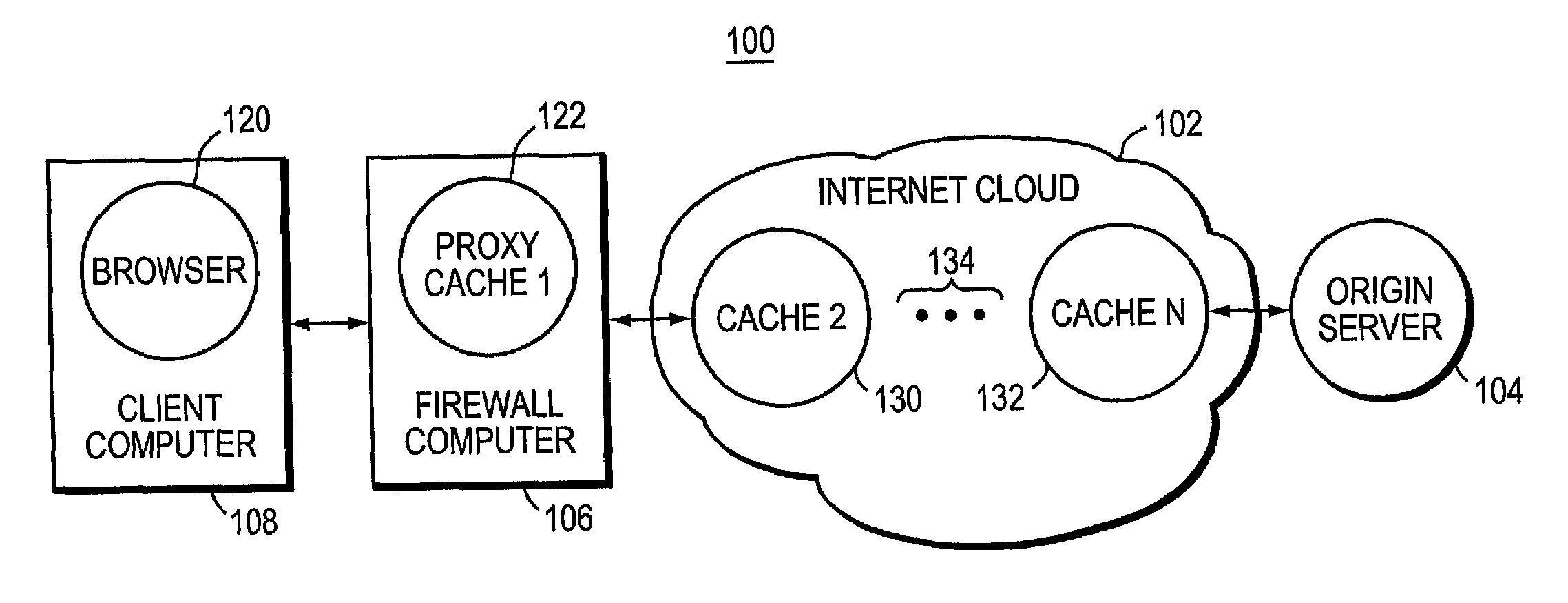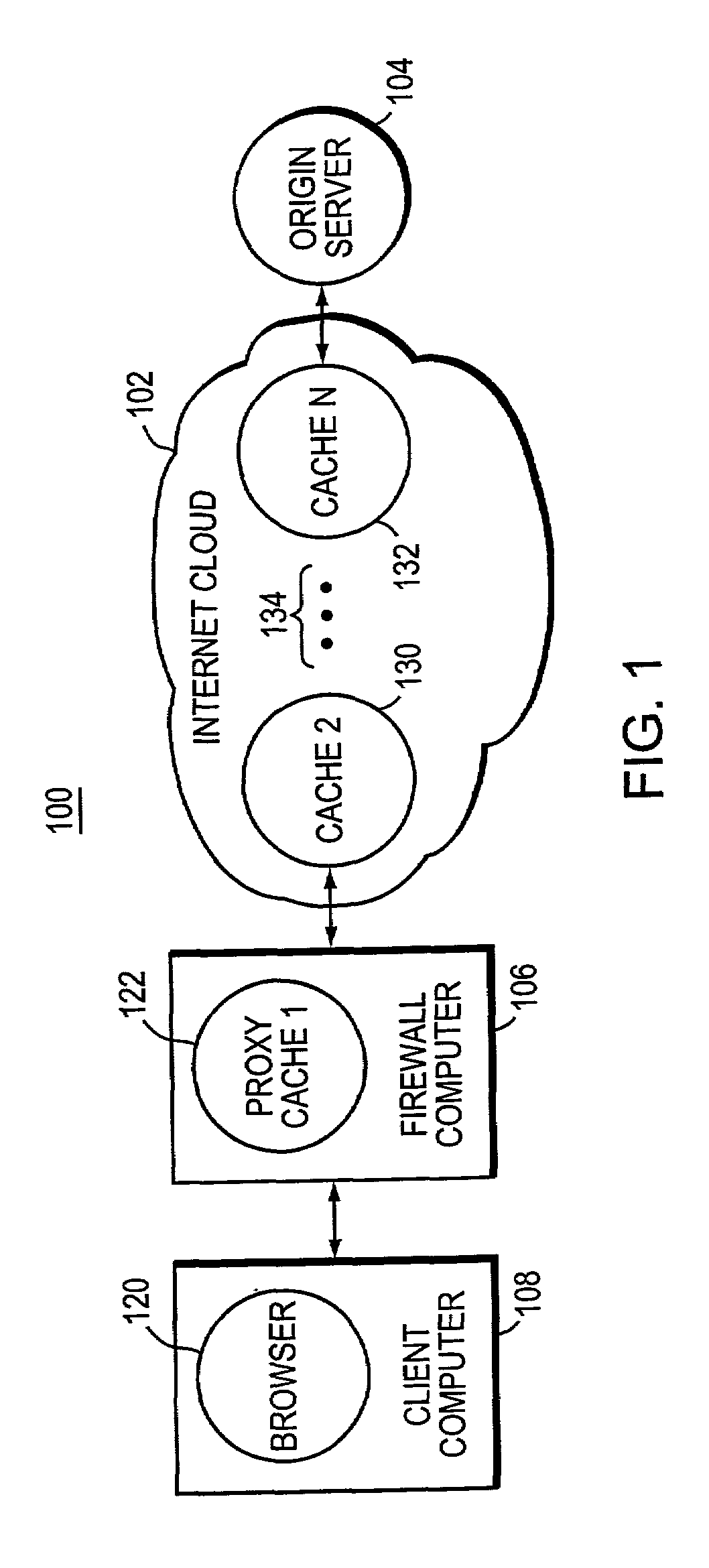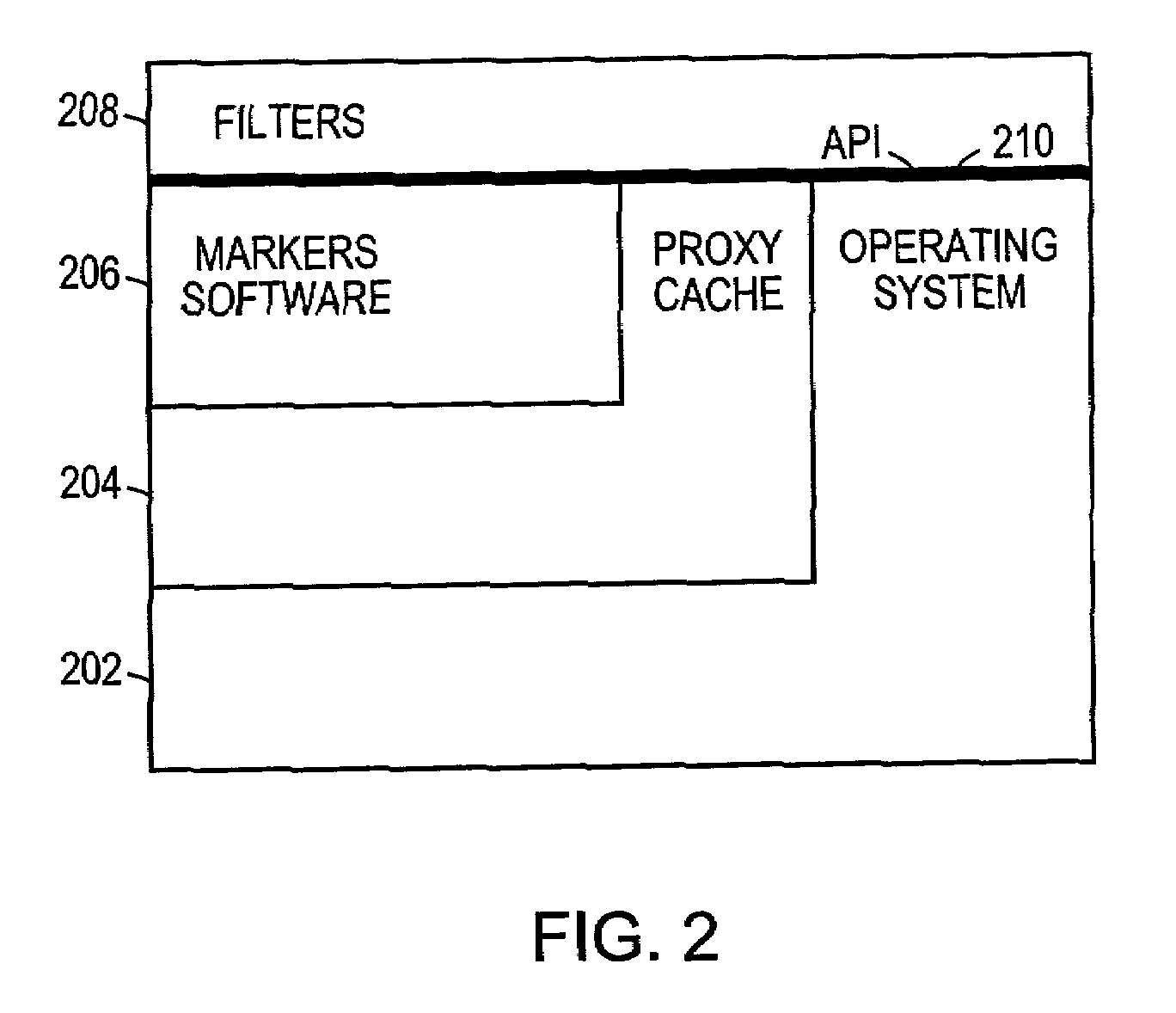Markers for cached objects
a technology for cached objects and markers, applied in the field of cached objects, can solve the problems of wasteful method of inserting external data into the page by scanning a web page as it is being vended, and achieve the effect of saving resources and reducing the amount of cached objects
- Summary
- Abstract
- Description
- Claims
- Application Information
AI Technical Summary
Benefits of technology
Problems solved by technology
Method used
Image
Examples
Embodiment Construction
[0035]Turning now to FIG. 1, computer network 100 is shown. Computer network 100 is made up of an Internet cloud 102, an origin server 104 which is outside of the Internet cloud 102, a firewall computer 106, and a client computer 108. In operation, a browser computer program 120 executes in client computer 108. Browser software 120 is commanded by a person using client computer 108, to obtain a file, or document, stored in origin server 104. A message from browser software 120 to origin server 104 is transmitted through firewall computer 106 and then through the Internet cloud 102 to the origin server 104.
[0036]The origin server 104, in response to the request to transfer a file to browser 120, transmits the file. The file is transferred through Internet cloud 102 to the client computer 108, where browser program 120 receives the file, and in many cases converts the file into an image which is displayed on a screen of client computer 108 so that the person using client computer 108 ...
PUM
 Login to View More
Login to View More Abstract
Description
Claims
Application Information
 Login to View More
Login to View More - R&D
- Intellectual Property
- Life Sciences
- Materials
- Tech Scout
- Unparalleled Data Quality
- Higher Quality Content
- 60% Fewer Hallucinations
Browse by: Latest US Patents, China's latest patents, Technical Efficacy Thesaurus, Application Domain, Technology Topic, Popular Technical Reports.
© 2025 PatSnap. All rights reserved.Legal|Privacy policy|Modern Slavery Act Transparency Statement|Sitemap|About US| Contact US: help@patsnap.com



